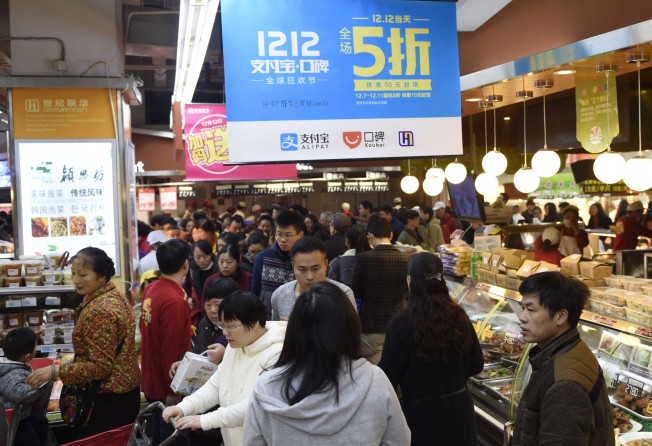
China’s O2O darlings risk becoming zero-to-zero as valuations outstrip earnings

Chinese internet startups in the online-to-offline (O2O) category are getting a cold shoulder from private equity and venture capital funds, as valuations have exceeded projections while good business models are harder to find.
A quarter of the 42 startups that raised a combined US$913.2 million in the third quarter were O2O companies, fewer than the same quarter in 2015, when 40 per cent of 169 companies successfully funded were O2O firms, according to ChinaVenture Investment Consulting’s data. The amount of funds raised in the three months ended September fell 22 per cent from the same quarter last year.
The lacklustre investment figures, a fresh sign of waning enthusiasm toward the much-hyped O2O businesses, also led to a devaluation of existing “unicorns,” or unlisted technology firms valued at more than US$1 billion.
“The valuations of some of the established O2O players in China are making investors quesy,” said Cao Hua, a director at Tripod Capital, which manages more than 4 billion yuan in assets. “Upon seeing the lacklustre performance and limited potential for further growth, it’s not a surprise that bearish sentiment is starting to swirl, especially for the embattled businesses.”
In a typical O2O business model, retailers identify customers via an online platform before drawing them to a physical store to complete the transaction.
The increasing popularity of internet and mobile technologies in China, mixed with changing lifestyles and consumer habits, have nurtured at least five technology companies with market value exceeding US$10 billion, in addition to 37 “unicorns,” according to CB INsights.
An October 2015 merger between online group buying operator Meituan and restaurant reviewer Dianping raised expectations that consolidation in the industry would reshape the entire business landscape on the mainland.
The merged Meituan-Dianping businesses reported 170 billion yuan in combined 2015 sales, according to Dianping co-founder Edward Long.
By September, the merged entity’s valuation fell to US$12.5 billion, from US$18 billion at the beginning of the year, after a series of controversies from a food scare to disputes over salaries, according to the Shanghai Securities News.
“Getting financially stronger doesn’t necessarily translate into a better business prospect,” said Ray Lu, an investment director with Hotung Ventures, which invested in several O2O firms including Shengda Auto.
Valuations will drop by 20 per cent on average this year for some Chinese O2O businesses, after two straight years of euphoric investments, he said.
The business models of some O2O companies such as the online food-ordering services, lack foundation, because of the shrinking size of China’s working population, said FengHe Fund Management’s chairman John Wu. His US$300 million fund had invested in online cosmetic retailer Jumei and housing data provider Fangjia.com.
“One day in future, you may find it super expensive to hire a delivery worker and extremely difficult to make a profit from the business,” Wu said. “Not all O2O businesses reflect the future of the Chinese economy.”
Yi Ji Shopping has certainly met its challenge. The wine trading platform used up the 38 million yuan it raised in less than a year. When it started in June 2015, Yi Ji used to give back to the customer 100 yuan for every 400 yuan of buying order received.
As more and more startups now face liquidation and business failure, O2O has now come to be known as zero-to-zero.
Still, for every analyst who sees a crisis, there’s a venture capital fund who finds opportunity.
“The pessimism was overdone,” said Zhang Ming, a managing director with Flag Leader information, an O2O firm dealing with tailor-made clothing. “This is a densely populated market and business can thrive once you find the right technology to bring the needed products and services to the customers.”
Others are shifting gear, asking whether the technology is indeed relevant, or efficient, in bridging the gap between product and customer.
“Internet technologies do help improve business efficiency and benefit consumers,” said Alibaba Group’s merchant business general manager Zhang Kuo. “Retail chain brands can reach out to a much wider range of clients via the internet while the key to success hinges on the capabilities to better melt technologies into supply chains.”
Cloud computing, big data and artificial intelligence are instrumental in optimising business structures and distribution of manpower to maximise sales, he said.
A client, after accessing information on a product he needs on the cyber space, hopes to obtain the good or service at the retailer’s earliest convenience.
To arrange delivery of the good or service through the nearest store or warehouse to the client with shortest time holds to key to business success, Zhang said.
Alibaba, which owns the South China Morning Post, is now delving into the notion of Omni-channel retail, rather than O2O, to consolidate its foothold in the mainland’s commercial realm.
An Omni-channel retail encompasses every link on the chain of the businesses, allowing clients to own their data and experience through services online and offline.
“For brands, it’s always of vital importance to accurately and promptly find their customers and cater to their demands,” Zhang said. “This is the power of the data by properly handling and processing them.”